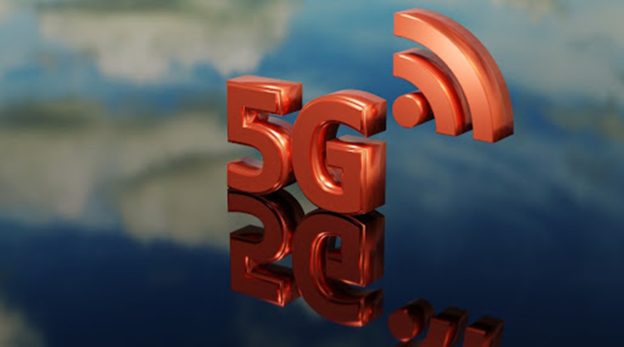What will 5G do for military and defence applications?
Fifth-generation mobile network technology or 5G is a high speed, greater bandwidth, and lower latency Internet network that will be ideal for various military and defence applications.
The world over 5G is gradually being adopted by countries for general communications, and in various military operations. Fifth-generation mobile network technology or 5G is a high speed, greater bandwidth, and lower latency Internet network that will be ideal for various military and defence applications. In simple terms 5G is set to take the present standard which we are using (4G LTE) network performance to a whole new level.
How will 5G help?
In the 21st century, with its ultra-high data rates and virtually instantaneous real time transmissions, 5G will set in motion another digital revolution on the battlefield. Some use cases for 5G military applications can be: Real-Time Cyber-attack Detection & Response; 5G for “smart” military bases and critical infrastructure; 5G in the “battle network” – real-time maps etc; 5G for “battlefield wearables”; 5G drones and artificial intelligence.
Virtual Roundtable
Recently, FinancialExpress.com had a virtual roundtable on military grade 5G technology and how it can be used by the Indian Armed forces and in government communications. To answer some of the questions, there were speakers including Manoj Kumar Dhaka, Defence Electronics Applications Laboratory (DEAL), Dehradun, MV Raja Shekhar, Director, R&D)- BEL, Maj Gen PK Mallick,(Retd), and Mombasawala Mohmed Saeed, GM-Measurement Solutions, Keysight Technologies India Pvt Ltd.
Is 5G an option to look at for defence communication?
According to MV Raja Shekhar, “At BEL, we have been working for the Army and Air Force to equip them with the cellular communication systems. In fact, we have supplied in the year 2007 secure telephone subscriber units. And again in 2016 we have supplied to the Indian Army a unit which is based on 3G.”
The 5G, is an excellent alternative, he says “as it provides us a higher bandwidth, higher data rate as your ultra reliable low latency type of communication for Internet of Things.” Adding, “This machine-to-machine type of communication also allows us to connect human beings to machines. So, the kind of opportunities that it throws up is immense.”
According to him, “There is a programme that is going on which is known as a byte integrated network terminal, which is also based on 4G now. Definitely when 5G comes up, it is going to replace 4G and then there are many programs of Indian army which we call BMS or battlefield management system, future infantry soldier as a system, all these are opportunities where 5G can actually help people to get network with their position with their weapons with their capabilities, whatever the video surveillance systems and so, it pulls up immense opportunities for the entire Indian Defence Forces to be knit together.”
Views on Spectrum and two frequencies
Sharing his views, Maj Gen PK Mallick says, “There is an increasing pressure on different spectrums. The logic given some times is that you are not using the spectrum.”
“You see, the different spectrums will never be new. Your communication channels, your electronic warfare, your radars, air defence data will be communication satellites coming in every day. Most of them are never in during operations, the red dots will only come out when the operation is about to start. And that is the time you cannot go back to the telecoms and say now give it back to us. So, in the perspective of 5G, the sub 6 GHz spectrum is under contention.”
“My take is that national security imperatives must be taken into account before giving away any defence spectrum. It will be tough, but we can follow the US model. What the US has done is a DOD deputy, work side by side and see what effect that has on the communications of these 5G technologies. There is a way to find out and we may like to follow these various things which are being done,” he adds.
View on adopting new technologies for enhanced efficiency and security in services
Says Manoj Kumar Dhaka, “Every sensor, every platform, they are becoming smart, they are having some kind of intelligence, so that a lot of data is getting collected and being manipulated for making it smart, so that they can become, to some extent, autonomous in taking decisions also. From that perspective, this technology, since it can handle very high data rates, I think it’s a big welcome, even in the military domain, because, another area where it really strikes very well is latency of one millisecond or less.
Command control applications will find a big use, where you can simply give a command to your UAVs, and all that, and they can do the needful. So, that’s in my belief, this technology has great potential for military applications, but there is always a penalty, when we speak of defence applications, there is something more than commercial applications, and that is basically, you know, the safeguards that their network should not be compromised at all.”
Watch:
Self-driving vehicles
According to Gen Mallick, “You have to do a cost benefit analysis, it is very easy to say, Okay, we’ll do this, you know, remote autonomous vehicles and all those things. Yes, it’s possible and when the 5G comes, it can be done. But everything comes with the cost, whether putting this is cheaper than your normal human being driving a vehicle by all means, do it. But you know, these concepts and all have to be validated on ground and please remember, we operate in very difficult terrain where you have to go and see how vehicles operate in one way track and capture tracks.”
https://www.financialexpress.com/defence/what-will-5g-do-for-military-and-defence-applications/2489092/





